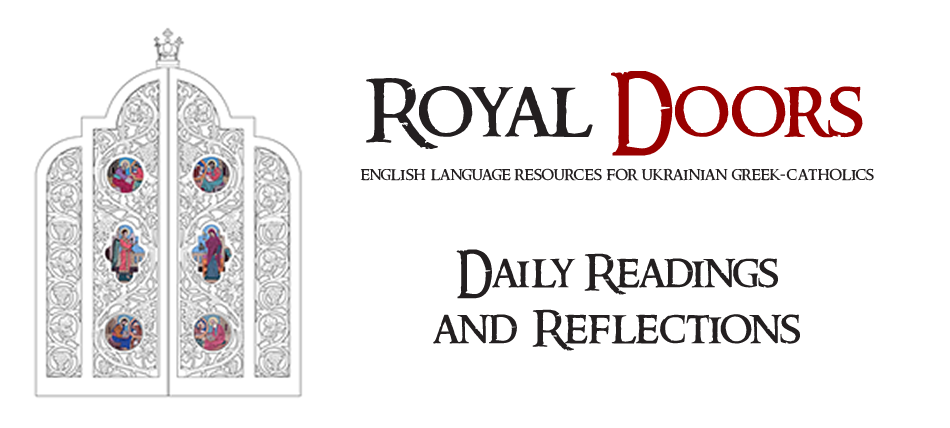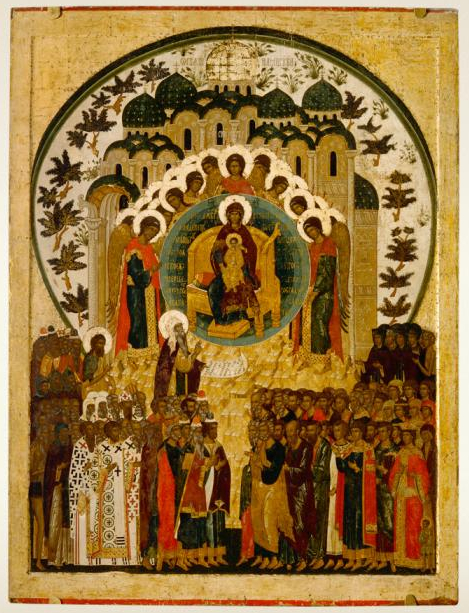CHURCHES AND INDIVIDUAL CHRISTIANS of many traditions are displaying Nativity scenes this season. All of them will include an image of the Virgin Mary, although there are serious differences in how these Christians view her. The historic Churches, Eastern and Western, reverence her as blessed and ever-virgin and ask her to intercede with God for us. Most Protestants do not, in the view that there is no warrant in the Bible for such activity.
Reverence for the Virgin Mary arose in the early Church in view of its growing belief that her Son, the Lord Jesus, is truly Godv and Man. The story of the annunciation – which is in the New Testament (Luke 1:26-38) – depicts Him as “Son of the Most High” and “Son of God,” conceived by the power of the Holy Spirit of a woman who has “not known a man.”His conception in Mary’s womb was a sign of His true divinity, and reverence for His mother was a way of proclaiming Him as God.
By the second century thinkers like St Justin the Philosopher were describing Mary as the “new Eve,” in much the same way that St Paul spoke of Christ as the new Adam: “Eve, who was a virgin and undefiled, having conceived the word of the serpent, brought forth disobedience and death. But the Virgin Mary conceived faith and joy, when the angel Gabriel announced the good tidings to her that the Spirit of the Lord would come upon her, and the power of the Most High would overshadow her” (Dialogue with Trypho, 100). As Eve took part in Adam’s sin, Mary was seen as somehow taking part in Christ’s reversal of Adam’s fall.
Stories of Mary’s Birth
As the Eastern Churches continue to do today, early Christians revered oral and other written traditions as well as the Scriptures as ways in which the Holy Spirit reveals the things of God to us. The second-century Protoevangelium of James is one of the most revered of these non-Biblical texts. It speaks of Mary’s own conception in the womb of St Ann, her birth and her presentation in the temple at Jerusalem. This work also teaches Mary’s virginity before giving birth, the miraculous way in which she gave birth, and her physical virginity even after giving birth.
The Protoevangelium would influence, not only subsequent theology, but also the prayer-life of all believers. Our feasts of the Maternity of St Ann (December 9), the Nativity of the Theotokos (September 8) and her Entrance into the Temple (November 21) are all based on this work.
“Theotokos” and “Aeiparthenos”
During the second- and third-century controversies about the divinity of Christ two terms describing the Virgin Mary came into use to support the position that Christ was fully both God and man by nature. The term Theotokos (she who bore God) had been in use in the Church of Alexandria at least from the time of the Arian controversy. They had concluded that, since Jesus Christ is “true God from true God” as the Council of Nicaea (325) declared, His Mother can rightly be said to have borne God in her womb. Churches in the tradition of Antioch, however, expressed doubts about adopting this title. The ensuing Council of Ephesus (431) affirmed the use of Theotokos and deposed the patriarch of Constantinople, Nestorios, who had banned its use. By identifying Mary as the Mother of God the Word, the council underscored the teaching that Christ was indivisibly God and Man. Devotion to the Virgin Mary and the use of prayer for her intercession spread after this council throughout the Churches.
All the historic Churches, except for the Assyrian Church of the East, refer to Mary as Theotokos while the Assyrian Church uses the title “Mother of Christ our God.” In the 1994 Agreed Statement between their two Churches the Pope of Rome, John Paul II, and the Catholikos of the Church of the East, Mar Dinkha IV, affirmed: “We both recognize the legitimacy and rightness of these expressions of the same faith and we both respect the preference of each Church in her liturgical life and piety.”
The term Aeiparthenos (ever-virgin), widely used in our liturgy, was also popularized at this time, although it did not carry the same weight as Theotokos. The idea that Mary was not only a virgin when she conceived and gave birth but ever after was taught as early as the second century, notably by St. Irenaeus of Lyons, and became increasingly popular in the fourth century. St Epiphanios of Salamis in Cyprus attests to its widespread acceptance at that time, even while minimizing its importance: “Now how could Joseph dare to have relations with the Virgin Mary whose holiness was so great? But even if she had sexual relations – and perish that thought! – what good would it do us to inquire into this? Which is the better choice, to leave the matter to God, or to insist on what is bad? Plainly, Scripture has not told us that we may not have eternal life, but will go to Judgment unless we believe that Mary had relations again” (Section 780).
St John Chrysostom (347-407) defended the perpetual virginity of Mary on a number of grounds, one of which was the Gospel affirmation that, after the crucifixion, “from that hour that disciple took her to his own home” (John 19:27). This was seen to imply that, after the deaths of Joseph and now Jesus, there was no one else to look after Mary and she had to be entrusted to St John.
Whose Children Were They?
The New Testament includes several mentions of Jesus’ brothers and sisters, such as this one: ““Where did this man get this wisdom and these mighty works? Is this not the carpenter’s son? Is not His mother called Mary and His brothers James, Joses, Simon, and Judas? And His sisters, are they not all with us? Where then did He get all these things?”(Matthew 13:54-6) The Gospels depict Jesus’ relatives as resisting His ministry during His earthly life. St Paul reports that the risen Christ appeared to James (cf 1 Corinthians 15:7); subsequently he and other family members became active disciples, with James leading the Church in Jerusalem. The New Testament includes epistles of James and Jude, showing the esteem in which the apostolic Church held them.
The Protoevangelium of James affirmed that Jesus’ “brothers and sisters” were Joseph’s children from a previous marriage. Eastern writers such as Origen took up this view and it is the most commonly held opinion among Eastern Christians. Thus James is often depicted in icons of the flight into Egypt as a boy walking alongside Joseph.
St Jerome, the fourth-century Illyrian monk and Biblical interpreter, held that “brothers and sisters” was a way of saying “relatives” and that James and the others would have been Jesus’ cousins. This is the generally accepted position among Western Catholics.
Many Protestants today teach that Mary was a virgin only until the birth of Christ because nothing beyond that is mentioned in the Scriptures. They might be surprised to learn that Luther, Calvin, Zwingli and other leaders of the Reformation all agreed that the Virgin Mary did not have other children. They did not deny the traditional teachings, but rejected those excessive devotions that exalted Mary at the expense of Christ.
Some Anglicans and Lutherans have revived veneration of the Holy Virgin, careful that that “any interpretation of the role of Mary must not obscure the unique mediation of Christ” and that “any consideration of Mary must be linked with the doctrines of Christ and the Church” (Anglican-Roman Catholic International Consultation).
Source: Eparchy of Newton

